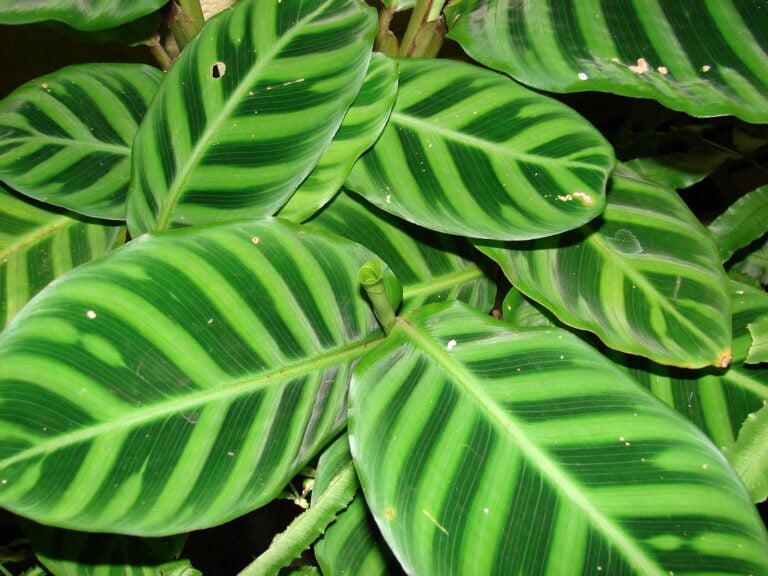The Croton Plant Is Your Next Favorite Flowering Plant
The croton plant and its many cultivars are some of the most beautiful shrubs you’ll encounter. It is a plant you’ll grow for its foliage. Want something different from a boring green shrub? How about yellow, red and even pink? It is a gorgeous plant that makes an excellent accent plant or a border for a path or walkway. Continue reading to learn more about this eye-catching shrub.
What Is the Croton Plant?
The name Croton describes a genus of plants in the Euphorbiaceae or Spurge Family. It includes a broad spectrum of plants from herb to tree. This group includes familiar plants such as the poinsettia and cassava. It is also the common name of a tropical shrub with the scientific name, Codiaeum variegatum. One word describes crotons—extraordinary. That is our focus.
There are numerous cultivars of crotons. The problem you may have is deciding which one you want! You’ll find many variations of size, leaf shape, and color. With so many choices, you’ll have no problem finding one to fit your space. You’ll find plants with whimsical names like ‘Gold Dust’ and ‘Sloppy Painter’ as well as elegant names like ‘Eleanor Roosevelt.’
Planting Croton Plants
Unfortunately, crotons have a very narrow range of USDA Hardiness Zones where you can plant them outside. We’re talking just 10B through 11. Temperatures lower than 45 degrees Fahrenheit spell doom for these plants. They were introduced to Puerto Rico but otherwise are an exotic, non-native plant. For all of their color, we are glad that they made it here.
You may find some cultivars that can survive in Zone 9, but they will need to come inside to overwinter. No matter where you grow them, it’s essential to understand that their beauty comes at a price. Crotons are not easy plants to grow and maintain. However, if you want a challenge, we can think of too many plants that will offer such fine rewards for your efforts.
Care and Maintenance
To succeed with crotons, you’ll need to keep in mind the narrow ranges it has for many of its basic needs. The fact that it can grow is so few hardiness zones is a good indication of a picky plant. And it’s going to cover most aspects of its care and maintenance. It is, after all, a plant of the tropics of southern Asia and the eastern Pacific islands.
Light and Temperature
As you may expect, the croton plant loves the sun. It requires full sun with at least six hours of direct light. That may lead you to think that it grows fast, but in reality, it is a slow-growing plant. It’ll reach a maximum height of about three foot tall. The croton plant prefers temperatures between 65 and 80 degrees Fahrenheit. It won’t even tolerate a cold draft. Talk about fussy.
But wait, there’s more! Full sun is one thing, but too much, and its colors may fade. On the flip side, too little sunlight will cause the plant to go all green instead of the beautiful variegated colors that may you pick it for your landscaping. The changes in color will give you a heads-up if its needs are not being met. Generally, temperatures up to 100 degrees Fahrenheit are okay.
Moisture Needs
Its moisture needs are just as strict. It prefers well-draining soils. Remember, it is a tropical plant. The croton plant may also need extra waterings and mistings when the weather gets warm. Keep on the lookout for wilting which is a sure sign that it needs more water. But, it won’t tolerate soggy soils. The key is the proper balance between moist and too wet.
You should pay close attention to its water needs during extreme weather. Avoid letting the soil dry out completely between waterings. If temperatures are soaring, make sure it gets a break from the heat to avoid excess moisture loss. It’s one time where it may welcome a bit of shade.
Soil Conditions and Fertilizing
The croton plant will tolerate a wide variety of soil conditions as long as they are well-draining. That is the most important criterion. To fuel its growth from spring to fall, you’ll need to apply a diluted solution of fertilizer that has a higher portion of nitrogen. That will support its active growth. During the cooler months, you can cut back a bit on both fertilizer and water.
Fitting In
There aren’t too many plants we’d add this disclaimer, but maybe that gives you an indication of what you’ll get with croton plants. These plants are so colorful that they can be overwhelming to the eye. The vibrancy may outshine anything else in your garden—assuming you’re successful, of course. For that reason, we recommend splashes of color rather than a flood of hues.
You’ll find a wide range of sizes, depending on the cultivar. With larger varieties, you may need to prune them to keep them confined to their space. That’s an important consideration for indoor plants as well, especially on that you’re moving in and outside during the year.
The croton plant is a broadleaf evergreen that can offer interest throughout the year. Despite their care issues, they are relatively pest free. You can even propagate new plants through air layering or cuttings. You can get rewarded for all your efforts for creating the perfect environment for the croton plant.
This video from the Virginia Cooperative Extension Master Gardener walks you through the process of air layering using a rubber tree plant as an example.
The croton plant is a fascinating plant from many perspectives. And it’s hard to describe with a single set of adjectives simply because there are so many cultivars. You can go wild with color with a shorter plant or a massive one. There is no end to the possibilities. If you’re up for the challenge, the croton plant will make it worth your while with a blaze of color.

